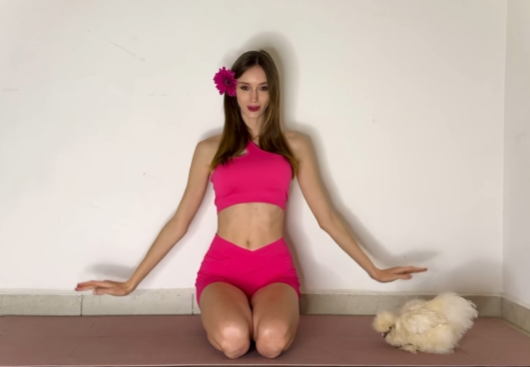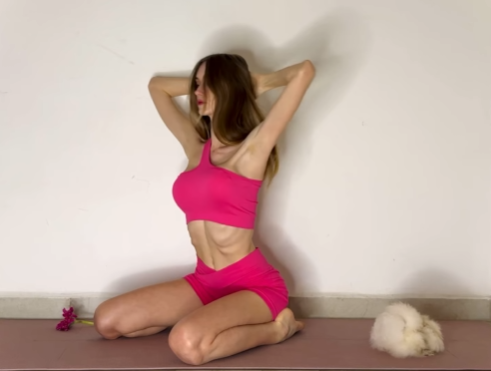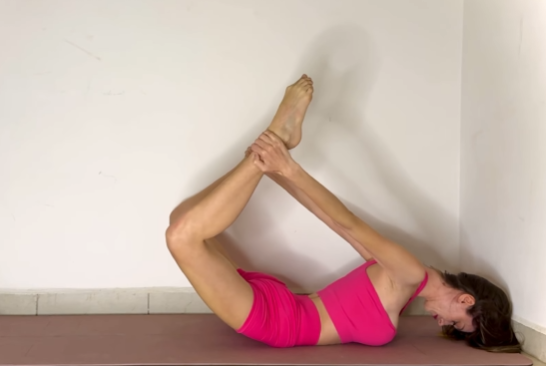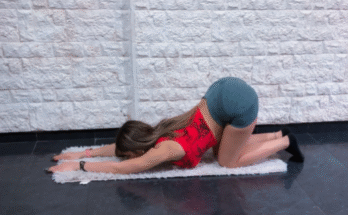
There’s a special kind of satisfaction that comes from stretching your body in a way that makes every muscle feel alive—awake, supported, and open. The kind of stretch that doesn’t just make you bend or reach, but makes you feel good from head to toe. That’s exactly what a full-body strength and flexibility routine offers: a combination of lengthening, strengthening, and reconnecting with your body in a deeply satisfying way.
Whether you’re a beginner looking to improve mobility or a seasoned athlete seeking recovery and balance, this routine is designed to give your entire body a loving, empowering experience. It’s a flow that blends stretching, controlled movements, and breathwork to maximize both flexibility and strength, leaving you feeling energized yet relaxed, strong yet supple.
Why Full-Body Stretching Matters
Most people think of stretching as simply bending a muscle or holding a pose. But true full-body stretching does much more:
- Enhances Flexibility – Not just in one area, but from shoulders to calves, including deep muscles often ignored in everyday movement.
- Builds Strength – Supporting your body in stretches requires engagement, stability, and controlled movement, which strengthens core, glutes, arms, and legs.
- Improves Circulation – Stretching increases blood flow, which nourishes tissues and promotes faster recovery.
- Reduces Stress & Tension – Slow, mindful movements combined with deep breathing calm the nervous system, easing mental fatigue.
- Prevents Injury – Balanced flexibility and strength create a body that can move safely and efficiently, reducing strain in daily life or sports.
A “feel-good stretch” is more than just physical; it’s a way to connect with your body, celebrate its capabilities, and honor its limits.
Starting With Mindful Breathing
Before you touch a single muscle, take a moment to check in. Sit comfortably on your mat, close your eyes, and take three deep breaths. Inhale through your nose, filling your lungs fully. Exhale slowly, releasing tension from your shoulders, jaw, and neck.
Feel your body from head to toe. Notice areas of tightness or stiffness. This is your starting point—not a limitation, but a map of where your body wants attention. Breath is the bridge between mind and body, and it will guide your stretches
Neck and Shoulder Opener

Tension often begins at the top. Start with gentle neck rolls:
- Tilt your head to the right, hold for 3–4 breaths, feeling the stretch along the left side of your neck.
- Slowly roll your chin to your chest, then over to the left side.
- Shrug your shoulders up toward your ears, then release them down.
Next, clasp your hands behind your back and lift gently, opening the chest and shoulders. This strengthens your back muscles while releasing tight chest and shoulder muscles. Feel the stretch and strength working together—this is the essence of full-body movement.
Side Body Stretch
From a standing or seated position, extend your right arm overhead and lean to the left. Breathe deeply, feeling the stretch along the side of your torso, the rib cage, and your hip. Switch sides.
This movement engages your obliques and core while stretching the intercostal muscles between your ribs—improving both strength and flexibility. Tiny adjustments can make the difference: keep the core engaged to avoid collapsing into the stretch.
Cat-Cow Flow for Spine Mobility
Move onto all fours for the classic Cat-Cow sequence:
- Inhale, arch your back, lift your heart and tailbone (Cow).
- Exhale, round your spine, tuck your chin and pelvis (Cat).
Flow slowly with your breath, feeling each vertebra move. This stretches the spine, strengthens the back and core muscles, and prepares your body for deeper stretches. It’s an essential full-body connector.
Downward Dog With Pedaling Heels

Transition into Downward Dog. Spread your fingers wide, press through your hands, lift your hips high, and let your heels sink toward the floor.
Pedal your feet slowly, alternating heels. This stretches hamstrings, calves, and shoulders while engaging your arms, core, and glutes. It’s both strengthening and elongating—perfect for a full-body feel-good stretch.
Lunges With Torso Twist
Step your right foot forward into a low lunge. Keep your left knee on the mat.
- Lift your arms overhead, engaging your core.
- Twist gently toward your front leg, opening your chest and shoulders.
- Hold for 3–5 breaths, feeling the stretch in the hip flexors, quads, and spine.
Switch sides. This pose strengthens your glutes, core, and legs while opening deep hip muscles. Every twist also encourages spinal mobility—a bonus for long-term flexibility.
Seated Forward Fold and Side Reach
Sit with legs extended in front of you. Inhale to lengthen your spine, exhale and fold forward.
- Keep a micro-bend in your knees if necessary.
- Reach your arms toward your feet or grab your shins, feeling your hamstrings and calves stretch.
- After a few breaths, shift your arms to one side for a gentle lateral stretch, then the other.
This stretch combines strength (holding your torso upright) and flexibility (reaching and lengthening the muscles) for a full-body effect.
Bridge Pose for Glutes and Core
Lie on your back, knees bent, feet hip-width apart. Press through your heels and lift your hips toward the ceiling.
- Squeeze your glutes, engage your core, and keep your chest lifted.
- Hold for 5–8 breaths.
Bridge strengthens your posterior chain—glutes, lower back, hamstrings—while stretching your hip flexors and opening your chest. It’s a classic example of strength and flexibility working together.
Legs Up and Twist for Relaxation

Finish with a gentle twist and legs-up-the-wall variation:
- Lie on your back, bring your knees to your chest, and gently lower them to one side. Extend your arms in a T-shape for a spinal twist.
- Switch sides.
Finally, if possible, scoot close to a wall and place your legs up against it. Rest here for 2–3 minutes. This pose soothes the nervous system, encourages circulation, and allows your muscles to fully relax.
The Feel-Good Factor
What makes this routine so satisfying is the balance between effort and release. Every pose engages muscles to build strength while simultaneously lengthening them to create flexibility. Every stretch is paired with deep, conscious breathing, enhancing relaxation and awareness.
After finishing, your body feels light yet supported, energized yet calm. There’s a subtle glow, a sense of openness from shoulders to hips, calves, and spine. You’ve stretched, you’ve strengthened, and most importantly—you’ve connected with your body in a meaningful, joyful way.
Daily Practice Tips
- Consistency matters: Even 15–20 minutes daily transforms your body over time.
- Listen to your body: Discomfort is okay; pain is not. Adjust poses as needed.
- Combine with breath: Never underestimate the power of mindful breathing to deepen stretches and reduce tension.
- Track progress: Flexibility increases gradually. Celebrate small improvements in range of motion or strength.
Remember, this isn’t just exercise. It’s a self-care ritual, a body reset, and a mental refresh.
Conclusion
A feel-good stretch for full-body strength and flexibility is more than just a workout—it’s a practice of loving and listening to your body. From neck rolls to hip-openers, lunges, and twists, this flow allows every muscle to wake up, release tension, and grow stronger.
When done mindfully, this sequence leaves you not only more flexible and toned but also calmer, energized, and deeply connected with your body. It’s a holistic approach to wellness—strength meets stretch, effort meets ease, and movement meets mindfulness.
So roll out your mat, breathe deeply, and give your body the gift of a feel-good stretch today. 🩷


